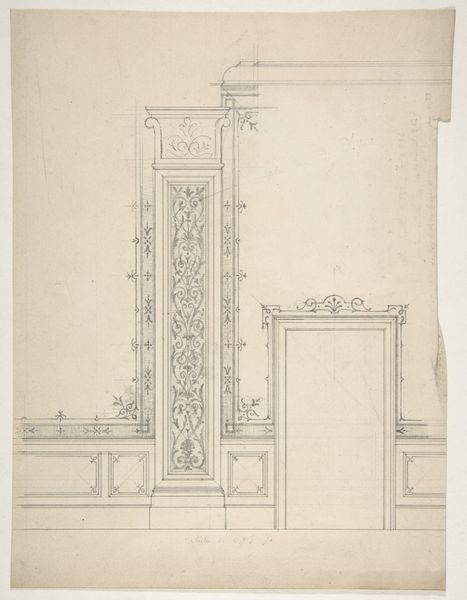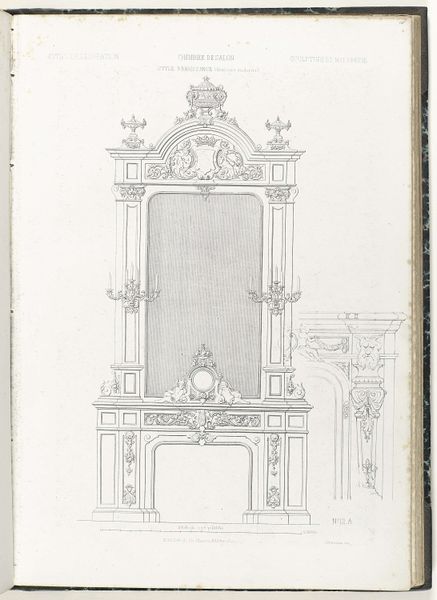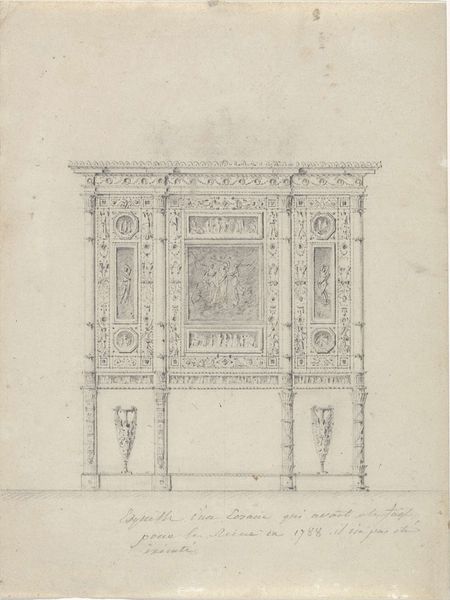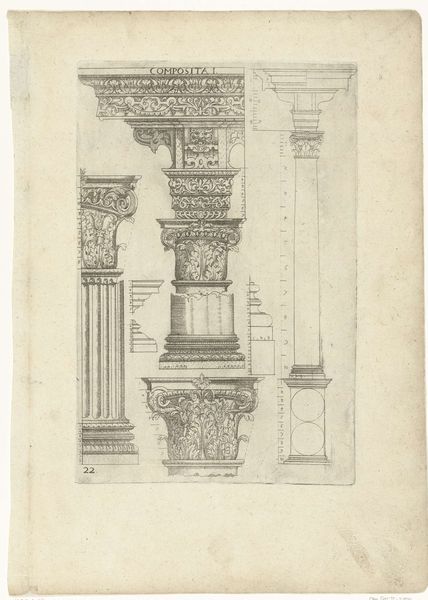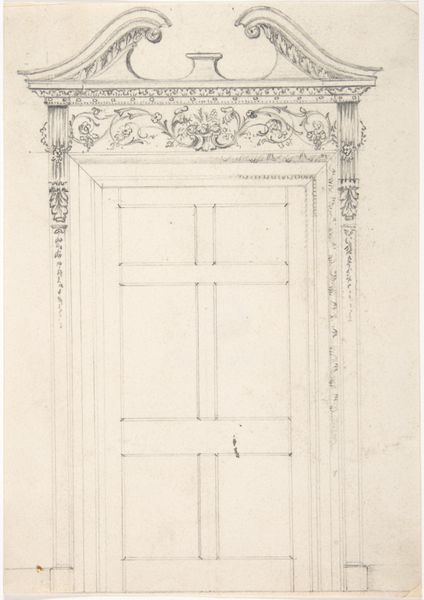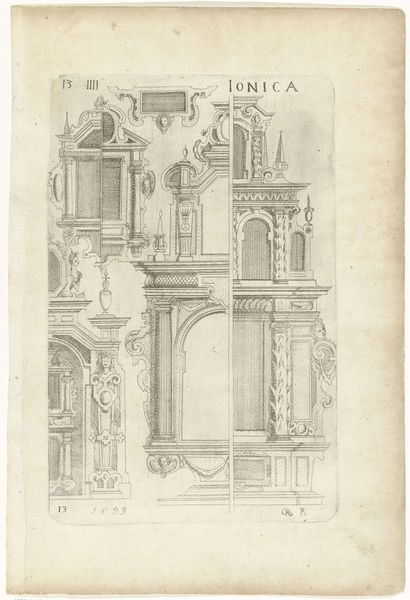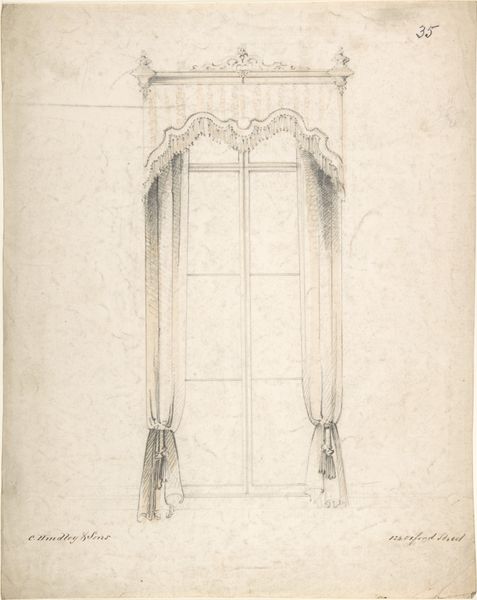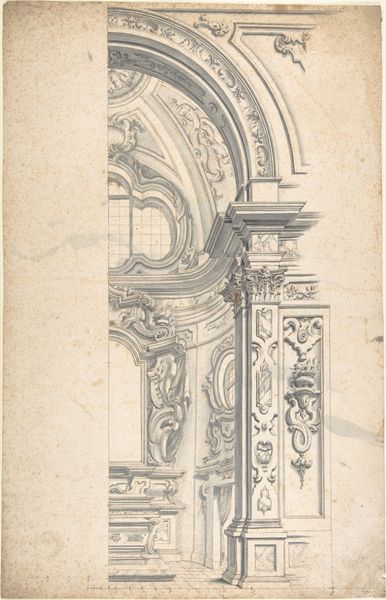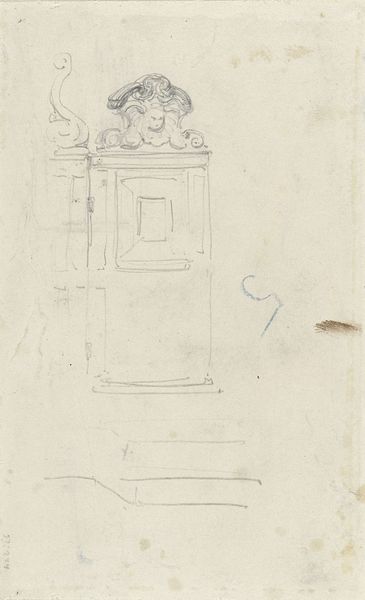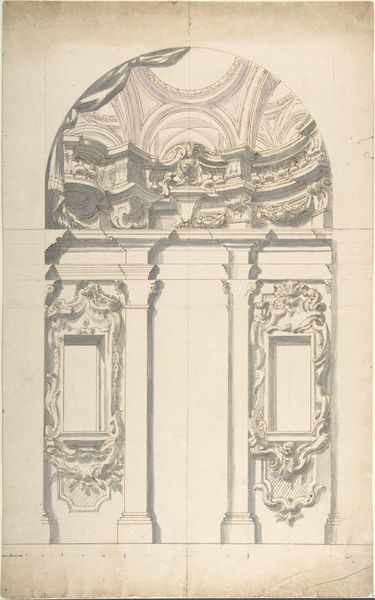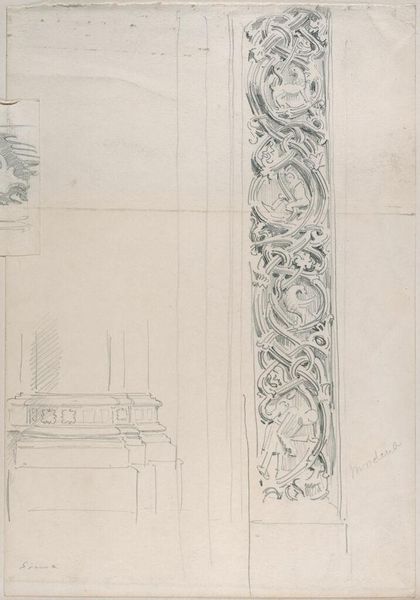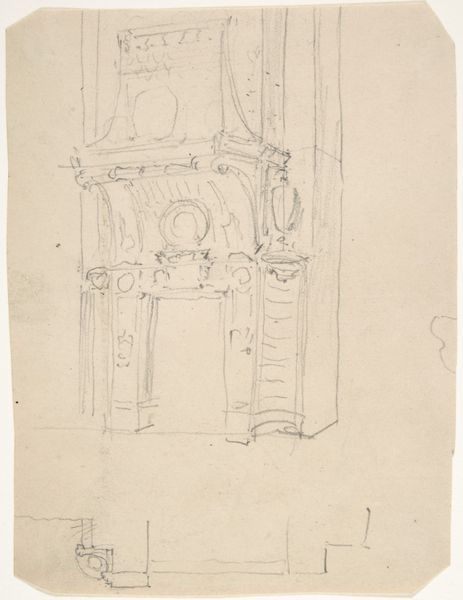
Deur in de afsluiting van de Drapenierskapel in de Nieuwe Kerk te Amsterdam 1838 - 1915
0:00
0:00
drawing, pencil
#
drawing
#
landscape
#
etching
#
pencil
#
cityscape
Dimensions: height 274 mm, width 208 mm
Copyright: Rijks Museum: Open Domain
Editor: This drawing, “Deur in de afsluiting van de Drapenierskapel in de Nieuwe Kerk te Amsterdam,” is attributed to Johan Adolph Rust, dated sometime between 1838 and 1915, and looks to be crafted with pencil and etching techniques. It feels like a precise architectural rendering. What do you see in this piece from a formalist perspective? Curator: The immediately striking aspects are the rigorous linear precision and the spatial relationships articulated through the architectural forms. Observe how Rust employs hatching to suggest depth and shadow, creating a dialogue between the planar surface and the illusion of three-dimensionality. The Doric order of the columns dictates a vertical rhythm countered by the horizontality of the entablature. Editor: So you’re saying that the drawing itself, the lines and shapes, create a kind of visual language? Curator: Precisely. The vocabulary of classical architecture—columns, panels, and decorative flourishes—functions as a sign system. Consider how the delicate etching renders the ornate ironwork, juxtaposing linear control with intricate detail. What kind of reading does this opposition give? Editor: Maybe a tension between order and decoration? The rigid structure tries to contain this more fluid, almost organic, design. Curator: An astute observation. Furthermore, note the scale indicated in relation to its format. It seems to hint at its role as documentation or record more than as aesthetic pursuit. Editor: I’m starting to appreciate how much the drawing itself communicates, beyond just what it represents. I was focusing so much on what the Amsterdam church must have looked like, and now realize there is visual analysis to engage with. Curator: Precisely, the artwork is in itself a rich plane.
Comments
No comments
Be the first to comment and join the conversation on the ultimate creative platform.
